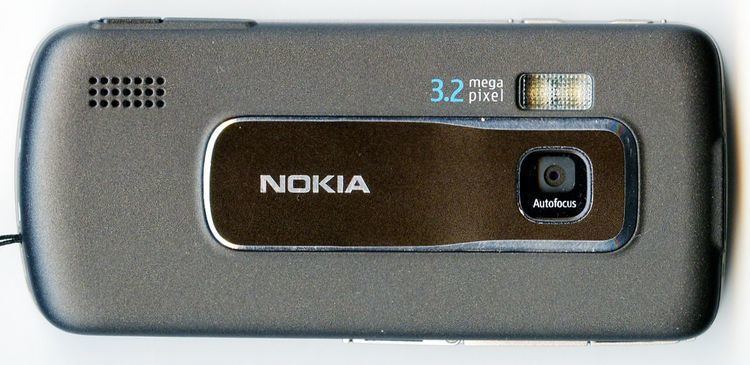Weight 117 g (0.258 lb) | Form factor Slider | |
 | ||
Compatible networks EGSM 850/900/1800/1900 HSDPA 900/2100 Dimensions 103 mm × 49 mm × 14.9 mm Operating system | ||
The Nokia 6210 Navigator is a smartphone made by Nokia that is a successor to Nokia 6110 Navigator. It was announced on February 11, 2008 and has been available since July 2008. It runs on Symbian OS v9.3 with a S60 3rd Edition FP2 user interface.
Contents
The Nokia 6210 Navigator is the third phone in the Navigator series to be released by Nokia. The Nokia 6210 Navigator includes pre-loaded navigation maps with a free navigation license for 6 months.
It should not be confused with the Nokia 6210 from 2000.
It was succeeded by the Nokia 6710 Navigator.
Accelerometer
The 6210 Navigator includes a built-in accelerometer. This was originally only used for video stabilization and photo orientation (to keep landscape or portrait shots oriented as taken).
Nokia Research Center has allowed an application interface directly to the accelerometer, allowing software to use the data from it. Nokia has released an application to demonstrate this.
Third-party programs have been created, including software that will automatically change the screen orientation when the phone is tilted, programs that simulate the sounds of a Star Wars lightsaber when the phone is waved through the air, allow you to mute the phone by turning it face-down, and many more.
Technical specifications
Updating software and maps
Users can determine the software version in the phone by pressing *#0000# on the keypad. There is a code e.g. 0123456 beneath the phone battery (switch phone off first before accessing) which needs to be recorded and entered on the Nokia website to enable Nokia to report the latest software version e.g. V.04.13. Using Nokia PC Suite and the data cable supplied to the phone, a software update can be performed from the PC after downloading the new version of the software. For phone plan users, the phone has to be turned off and on again after the update to restore the menu item for the sim card provider e.g. Vodafone, Telstra, Optus etc.
World maps can be purchased from Nokia through its website, though they are generally not the latest release from NAVTEQ/ROUTE66. These can be downloaded to the user's PC using Nokia Map Loader (requires Microsoft .NET Framework) or simply double clicking on the downloaded .SIS file with the phone connected to Nokia PC Suite by the data cable, and finishing the installation on the phone. The whole process takes approximately 15 minutes. The maps are installed to the data card and appear in the maps section as World Maps. Installing the maps does not affect the GPS Voice Navigation if this service is already being provided by the sim card provider. If the text, Street not Digitised Appears, the user can just zoom to current GPS location to enhance map magnification.
NAVTEQ's website provides users with a Map Reporter function where users can report missing streets, missing features, restriction, points of interest, errors in the spelling of street names for the Nokia 6210 Navigator. Users are encouraged to report variations in the interests of improving navigation.
